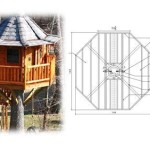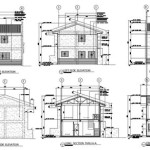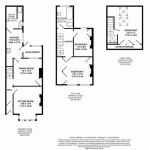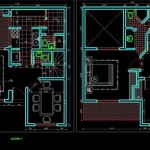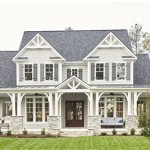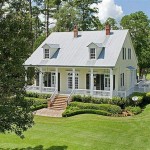Essential Aspects of Concrete Wall House Plans
Concrete wall houses are renowned for their durability, energy efficiency, and unique aesthetic appeal. If you're planning on building a concrete wall house, there are several essential aspects to consider to ensure a successful project.
1. Foundation Type
Concrete walls require a solid foundation to support their weight and prevent cracking. The appropriate foundation type depends on the soil conditions and building size. Common foundation options include strip footings, spread footings, and pile foundations.
2. Wall Thickness and Reinforcement
The thickness of concrete walls determines their load-bearing capacity and insulation value. Typical wall thicknesses range from 6 inches (15 cm) to 12 inches (30 cm). Walls should be reinforced with steel rebar to enhance their strength and prevent cracking.
3. Insulation
Concrete walls have high thermal mass, which can slow down heat transfer. However, additional insulation is required to achieve optimal energy efficiency. Insulating materials, such as closed-cell spray foam or mineral wool, can be installed between the walls or on the exterior.
4. Moisture Control
Concrete is porous and can absorb moisture, leading to mold and mildew growth. Proper moisture control is essential to prevent these issues. Waterproofing membranes or coatings should be applied to the exterior of the walls, and drainage systems should be installed around the foundation.
5. Window and Door Openings
Openings for windows and doors need to be carefully planned to ensure structural integrity. Lintels or pre-cast concrete beams are installed above openings to carry the weight of the wall above. Flashing materials should be used to prevent water infiltration around windows and door frames.
6. Electrical and Plumbing Considerations
Electrical and plumbing systems must be integrated into the concrete wall design. Conduits or embedded pipes are used to run wires and pipes through the walls, and outlets and fixtures are installed in designated locations.
7. Architectural Design
Concrete wall houses offer unique architectural possibilities. Careful consideration should be given to the form, texture, and finish of the walls to create a visually appealing and functional home. Concrete can be textured, stained, or painted to achieve various aesthetic effects.
8. Building Codes and Permits
It's crucial to adhere to local building codes and obtain necessary permits before starting construction. Building codes regulate the minimum structural requirements, fire safety measures, and energy efficiency standards for concrete wall houses.
Conclusion
Concrete wall house plans require careful consideration of various aspects, including foundation type, wall thickness, insulation, moisture control, window and door openings, electrical and plumbing considerations, architectural design, and building codes. By addressing these essential aspects, you can create a durable, energy-efficient, and aesthetically pleasing concrete wall house.

Cool Energy Efficient Concrete House Plans Houseplans Blog Com

Mun Jeong Heon House By A M Architects Surrounded Concrete Frame
Concrete Block Icf Design Home 1 Bdrm Bath 550 Sq Ft Plan 132 1488

Concrete House By Jeremy Smith The Design Guide

Concrete Box House Robertson Design Archdaily

Concrete Walls Ideas Modern House Architecture Minimalist Interior Design Interiors Wall Houses

Concrete House With A Simple Design Made For Young Family

Design Ni Daan Wraps Its Enclosure House In A Fluid Concrete Skin

Gallery Of Eins House Óscar Pedrós Arquitecto 10 Concrete Interiors Interior Architecture Design

Cantilevered Concrete House Eclectic Design With Mirrors

